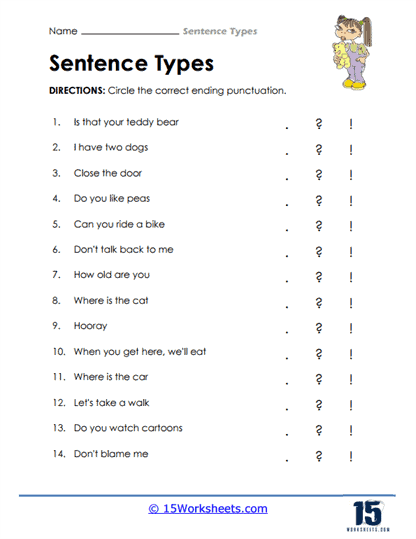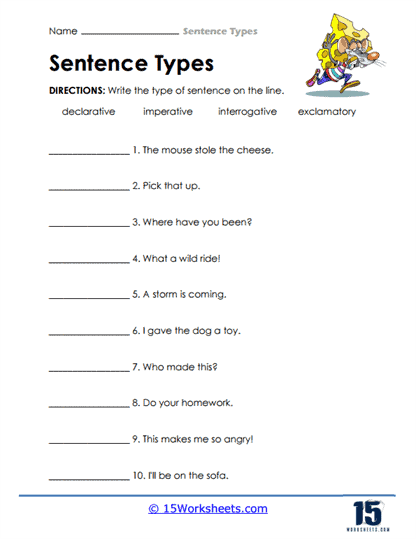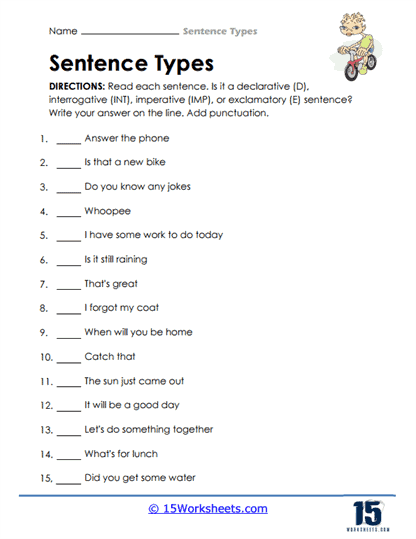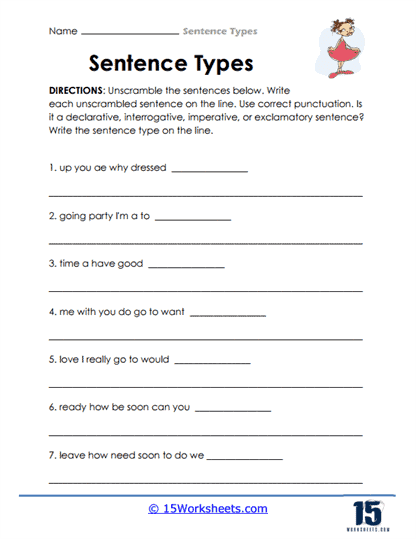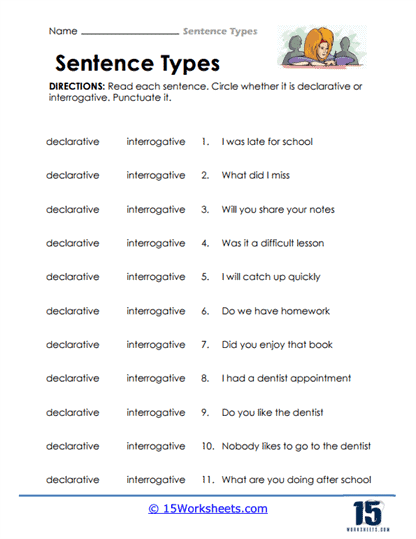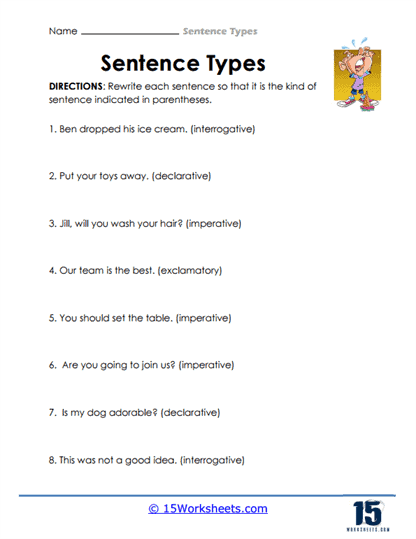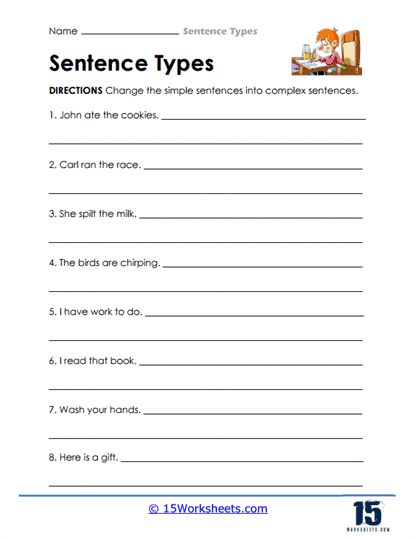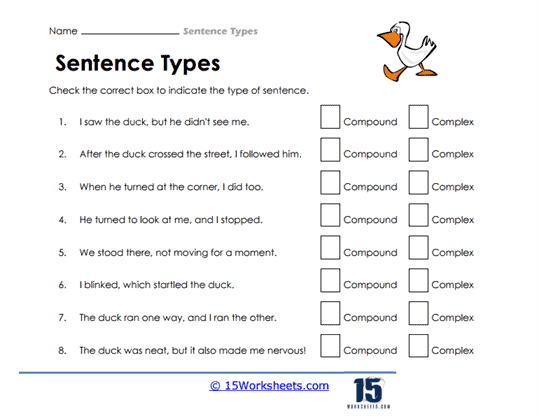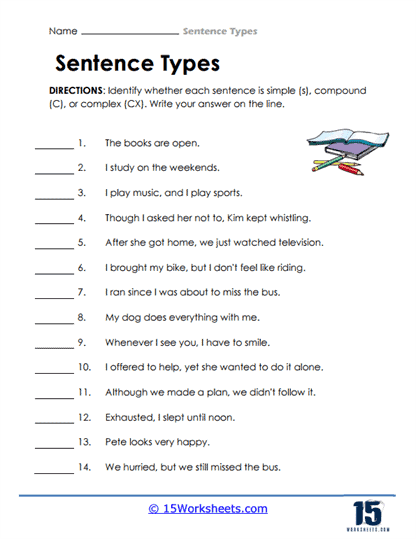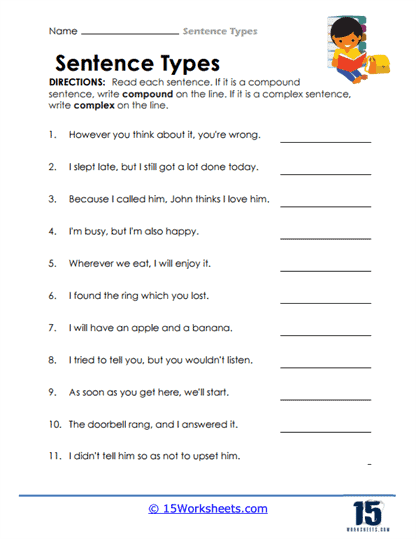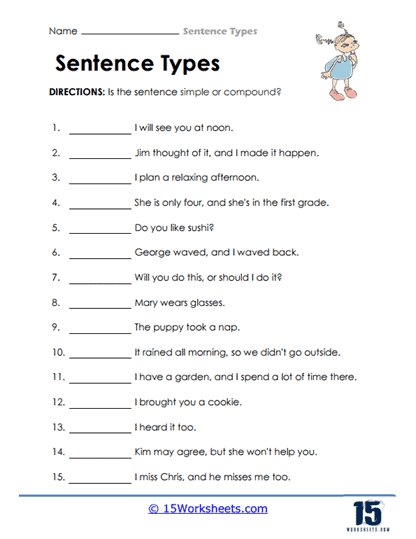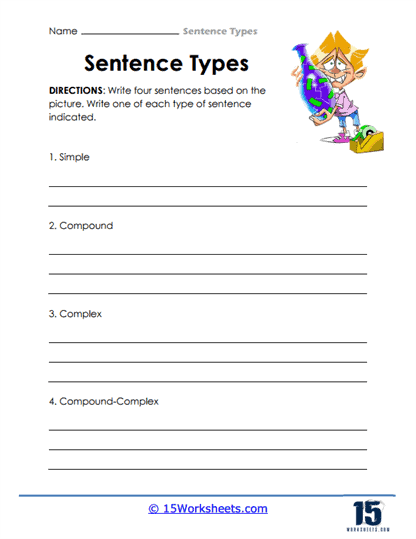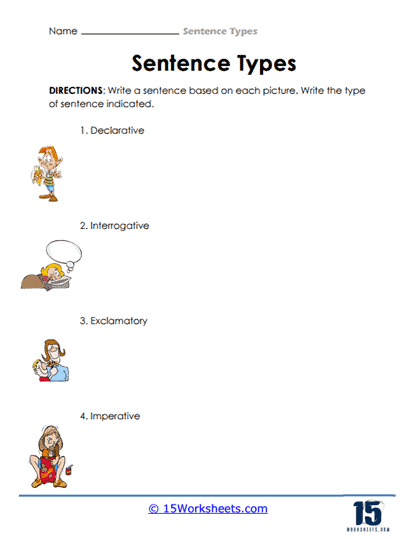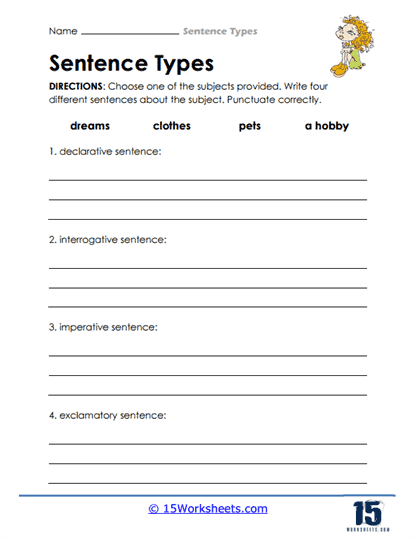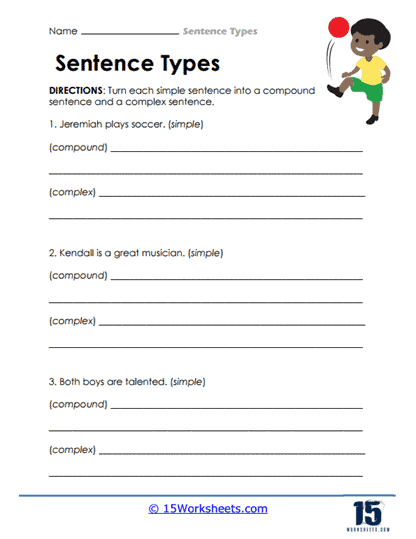Sentence Types Worksheets
All About These 15 Worksheets
These worksheets consist of a series of sentences that students analyze and classify into different sentence types based on their structure and purpose.
Sentence types worksheets help you practice identifying and using these different types of sentences correctly. They often provide examples of sentences, and you need to determine which type each sentence belongs to. This helps you understand how each type is structured and what kind of information or emotion it conveys.
The common types of sentences covered in these worksheets include:
Declarative – These sentences make statements or express facts and opinions. They end with a period.
Example – The sun rises in the east.
Interrogative – These sentences ask questions and end with a question mark.
Example – Where is the nearest library?
Imperative – These sentences give commands, instructions, or make requests. They often begin with a verb and end with a period or exclamation mark.
Example – Please clean your room.
Exclamatory – These sentences express strong emotions or feelings. They end with an exclamation mark.
Example – What a beautiful sunset!
Conditional – These sentences express a hypothetical situation or a condition and its outcome. They often use words like “if” or “unless.”
Example – If it rains, we will stay indoors.
Compound – These sentences consist of two or more independent clauses joined by coordinating conjunctions (e.g., and, but, or) or punctuation marks like semicolons.
Example – She studied hard, and she passed the exam.
Complex – These sentences contain one independent clause and one or more dependent clauses. The dependent clause cannot stand alone as a complete sentence.
Example – After finishing his homework, John went out to play.
How to Identify Different Sentence Forms
Study Grammar Rules – Begin by familiarizing yourself with the grammar rules and characteristics of each sentence type. Understand the structural elements, punctuation, and typical usage patterns associated with declarative, interrogative, imperative, exclamatory, conditional, compound, and complex sentences.
Analyze Examples – Read and analyze various examples of sentences from different sources, such as books, articles, or online resources. Pay attention to the sentence structure, word order, and the purpose behind each sentence. Identify the type of sentence and consider how its structure contributes to its meaning.
Practice Sentence Identification – Engage in practice exercises specifically designed to help you identify different sentence types. Sentence type worksheets, online quizzes, or grammar textbooks often include exercises where you can practice classifying sentences. The more you practice, the more confident you’ll become in recognizing the various sentence forms.
Create Your Own Sentences – Once you have a good understanding of each sentence type, challenge yourself by creating your own sentences of each form. This exercise allows you to apply your knowledge and reinforce your understanding of sentence structure and purpose.
Seek Feedback – Share your practice exercises or self-created sentences with a teacher, tutor, or language partner who can provide feedback. Their guidance and corrections can help you refine your skills and further solidify your understanding of sentence types.
Read Widely – Reading a variety of texts, such as literature, news articles, or essays, exposes you to different sentence types in context. As you encounter sentences in real-world writing, pay attention to their structure and purpose. This exposure will help you develop a more intuitive sense of sentence identification over time.

